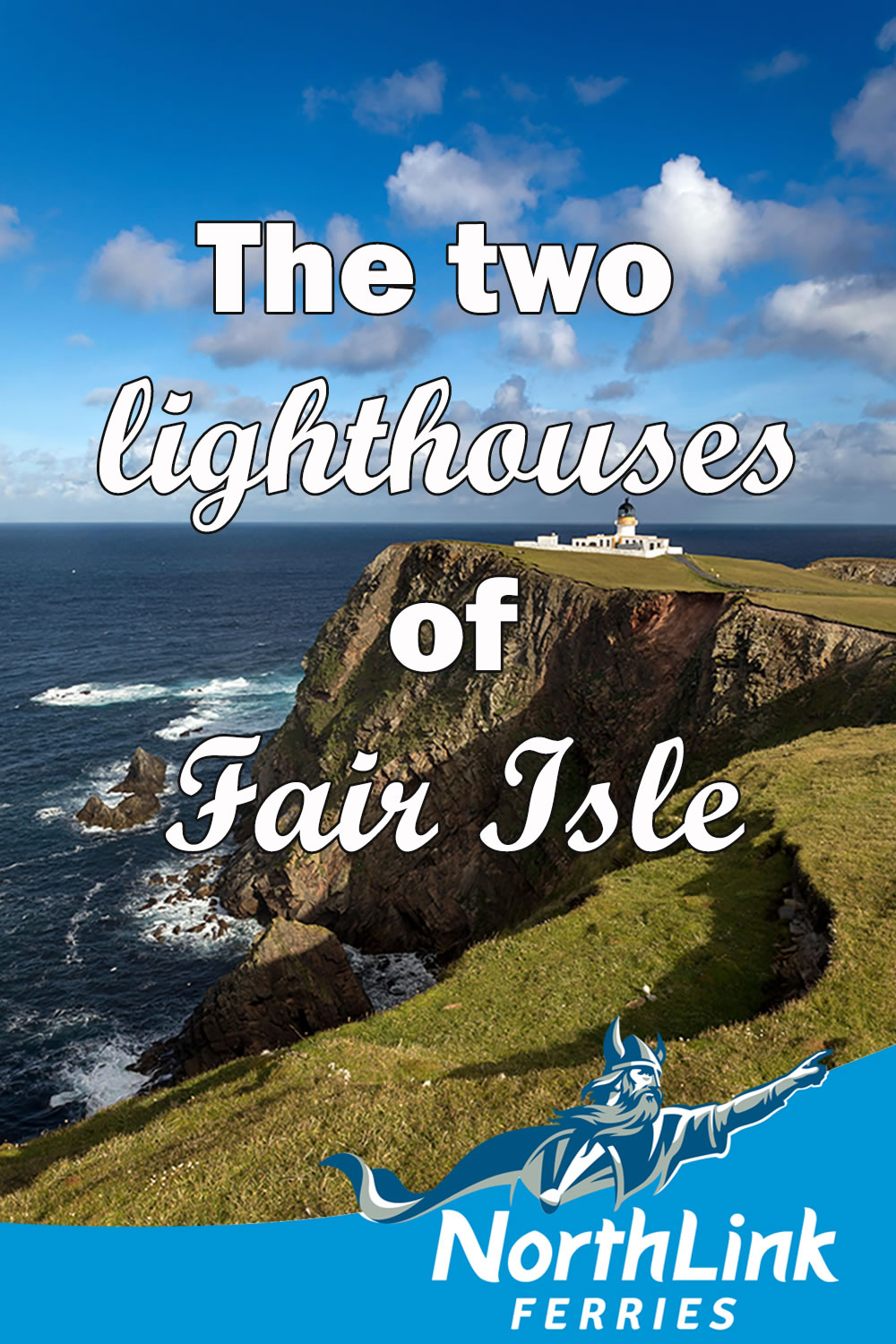The two lighthouses of Fair Isle
Midway between North Ronaldsay in Orkney and Sumburgh Head in Shetland, there’s a dramatic sight for seafarers to take in. Far off to the east, the lumbering cliffs of Fair Isle are jagged on the misty horizon.
There was good-natured rivalry between the teams of men that tended to Fair Isle’s two lighthouses. They competed in a monthly sport contest for a trophy – a cheap plastic cup painted silver.
It’s a lovely little island, famed for the sheep that eat the salted grass, the migrating rare birds that often make landfall here, and for distinctive Fair Isle knitting patterns.
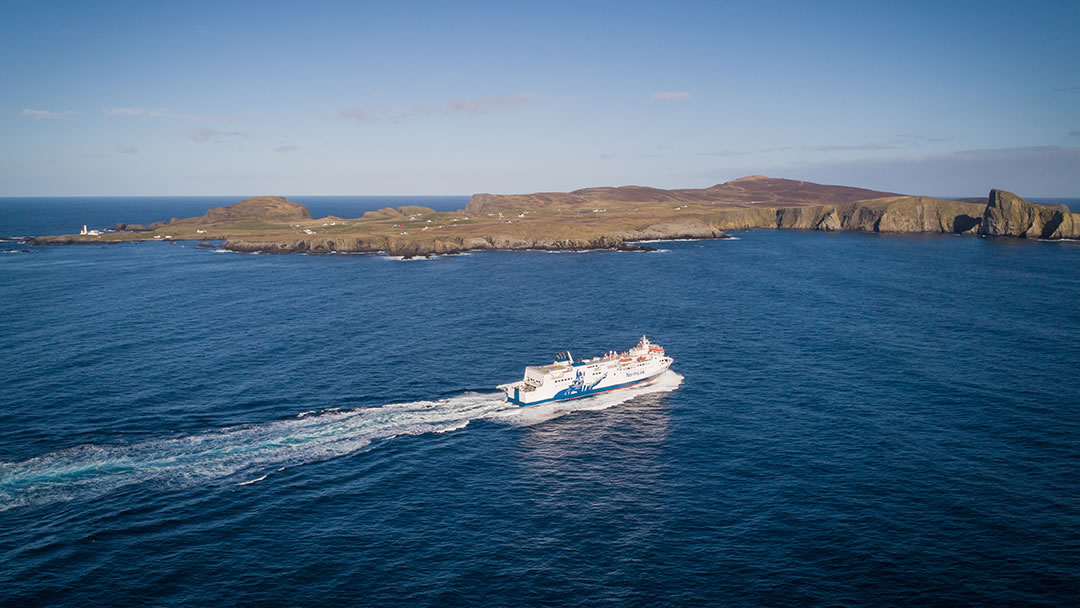
In previous centuries however its shoals and rocks have torn the sides out of hundreds of lost ships. The most famous shipwreck was ‘El Gran Grifon’ from the Spanish Armada.
In 1892 two white stone guardians were built on Fair Isle. The tall South Light at Skaddan is a warning finger to sailors, and the North Light is located on a cliff edge at Skroo on the northeast tip of Fair Isle.
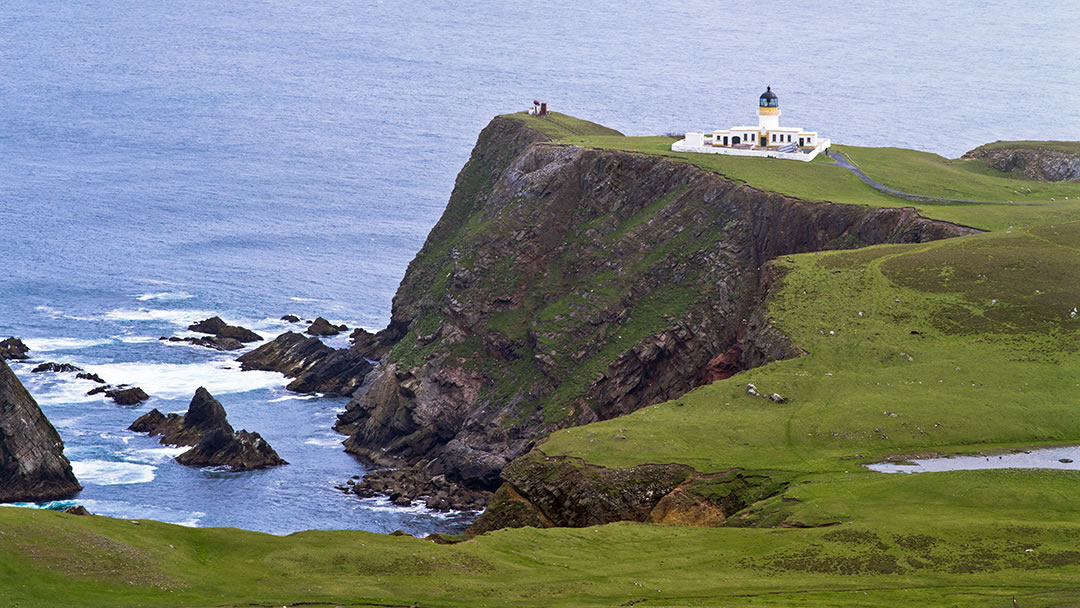
Fair Isle North
The road to Fair Isle’s North Light is a treacherous one which leads uphill along a winding road. On the approach to the North Light there are steep drops to the sea on one side.
The North Light stands on much higher ground than the South Light. The South Light had to be 73ft tall to be seen by passing ships, but the cliff the North Light stands on is already 215 feet above sea level. This means that only a short circular tower is required, and it stands upon the flat roofed office.
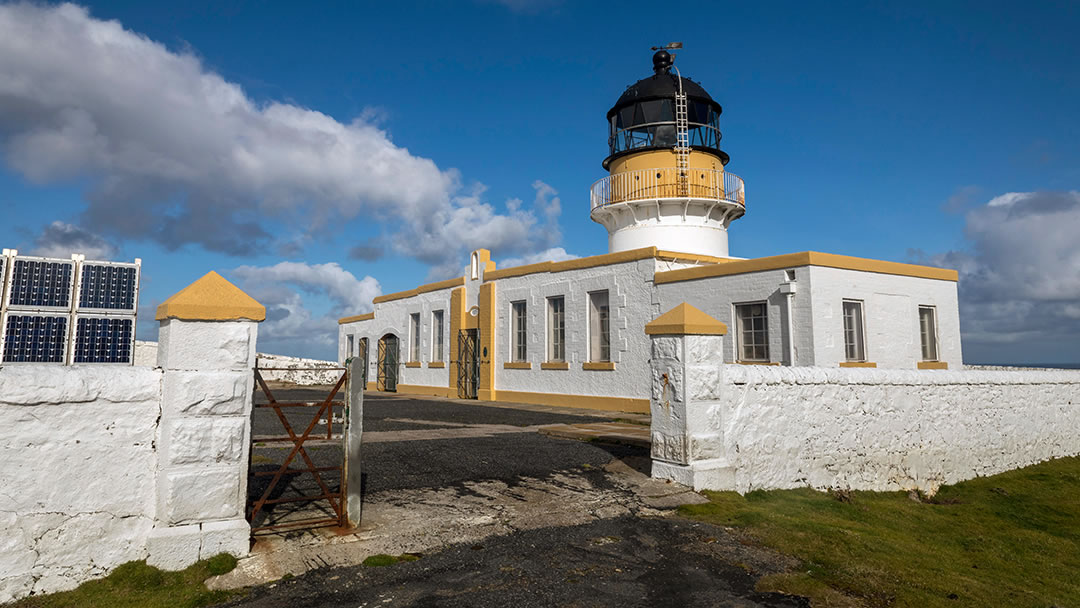
In all, the lighthouse is 47 feet tall. It shines 22 miles out to sea in all weathers, pulsing twice every 30 seconds. A flat-roofed, two-floored accommodation block accompanied the North Light.
The North Light has an impressive foghorn which sits out on a promontory called the Nizz and can be easily spotted from the sea. Once this was reached by a path hemmed in by iron railings to prevent keepers from being blown away in a gale. In recent years concrete sections of the path have fallen away, so the foghorn is probably best admired from afar.
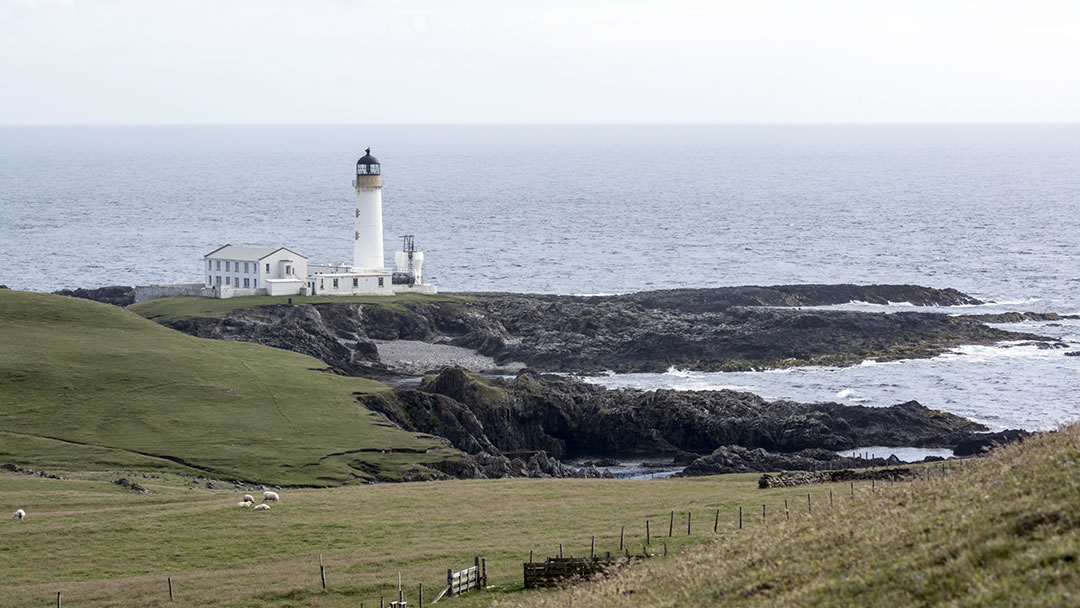
Fair Isle South
As the South Light is located on lower ground, it is slightly easier to reach than the North Light, however it stands in a setting equally as dramatic. Fair Isle South is almost at sea level and is surrounded by jagged rocks. When storms come howling over Fair Isle, waves crash on the coast like sudden white explosions around the lighthouse!
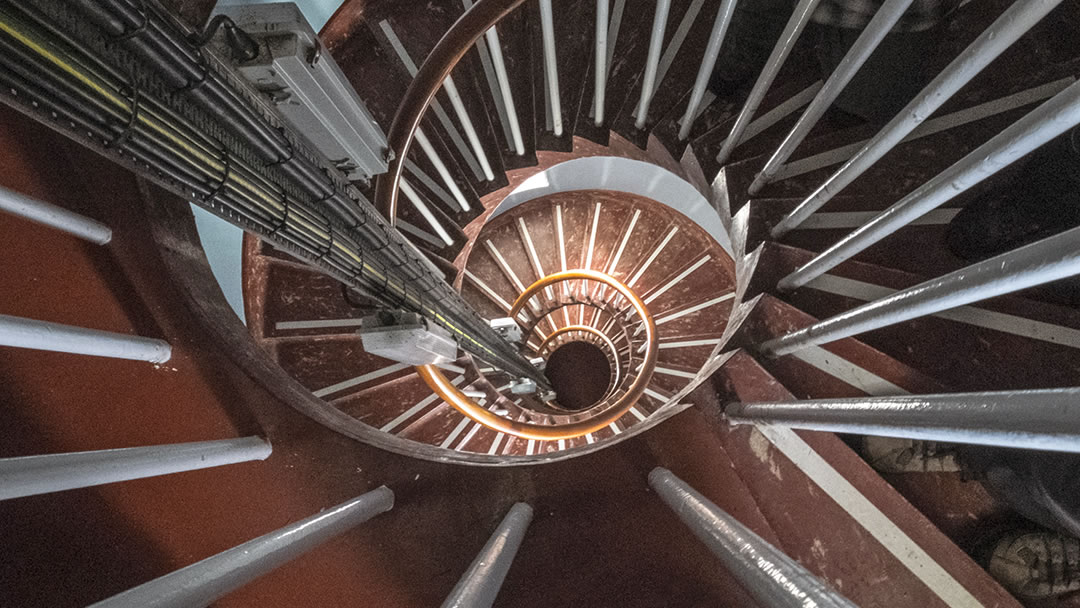
The South Light has a taller tower than the North Light, and there are 96 steps to the top. However, everything else about the lighthouse, in terms of its machinery and equipment, is almost identical to the one in the north of Fair Isle. The lamps of both lighthouses were originally illuminated using paraffin and turned by clockwork.
The light here flashes 4 times every 30 seconds and can be seen 24 miles away! The South Light also had a large accommodation block, home to a succession of keepers and their families. Unlike the North Light, the accommodation block at the South Light is still in place.
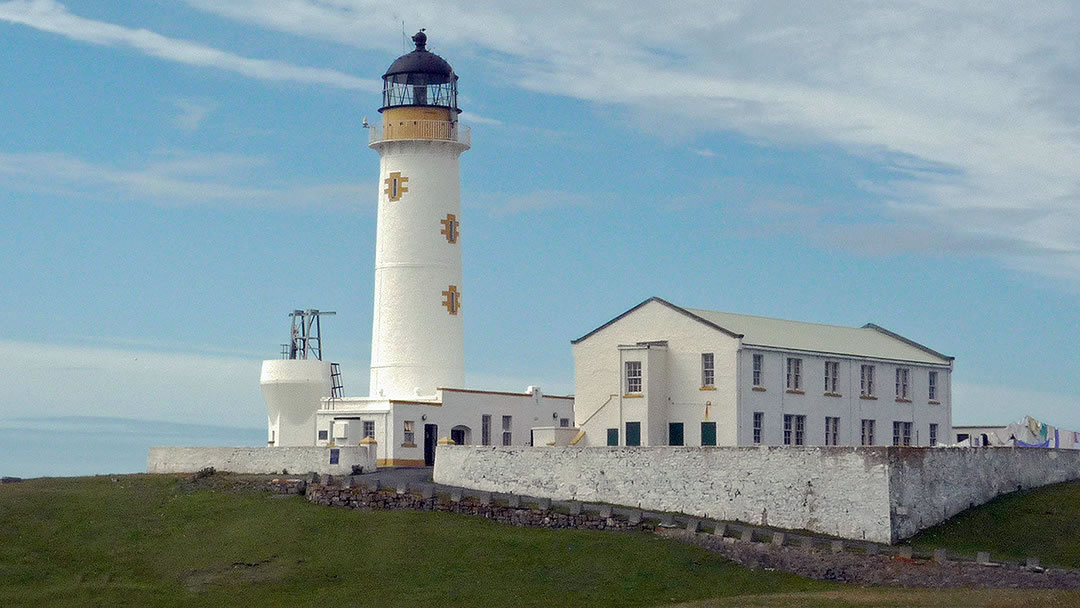
Building the Fair Isle Lighthouses
Both Fair Isle North and Fair Isle South were constructed David A. Stevenson and his brother Charles Stevenson, who were from a long line of famous lighthouse-builders. Scottish author Robert Louis Stevenson, who wrote ‘Treasure Island’, ‘Strange Case of Dr Jekyll and Mr Hyde’, and ‘Kidnapped’ also came from the same family.
Though the Fair Isle Lighthouses were built to prevent shipwrecks, they were also built to assist with the manoeuvres of the Royal Navy.
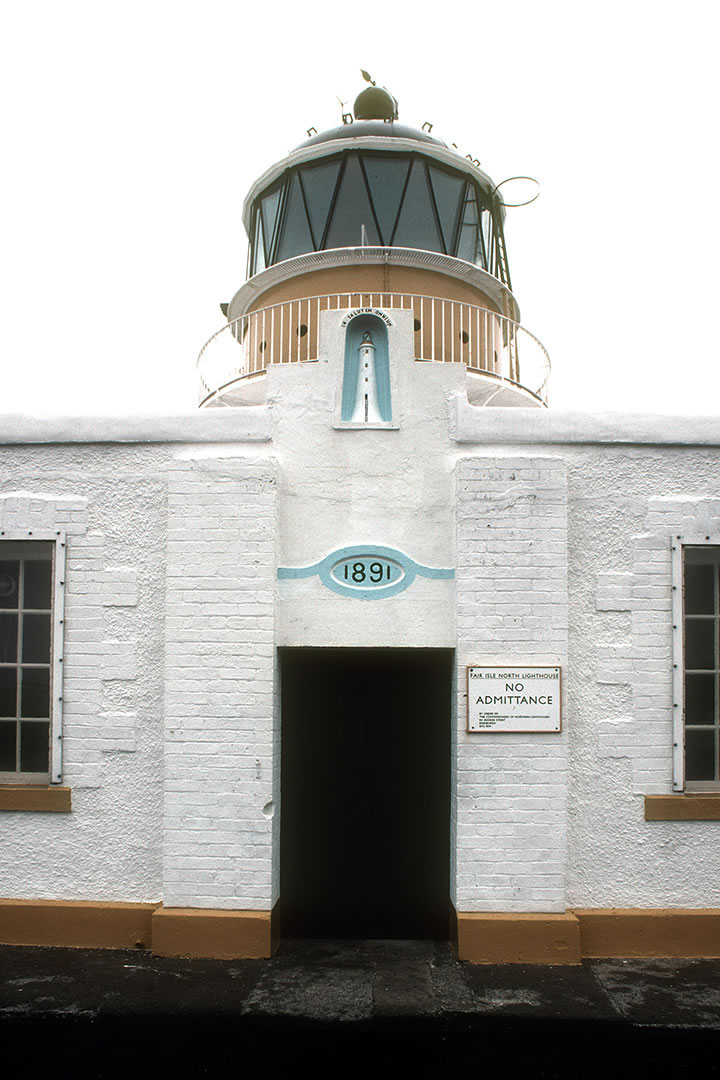
The lightkeepers of Fair Isle
The lighthouses on Fair Isle greatly contributed to the islands’ economic wellbeing. The lightkeepers and their families brought children to the school and custom to the local shop. Auxiliary keepers were often hired from the island, and there were instances of keepers marrying Fair Isle lasses.
There was good-natured rivalry between the teams of men that tended to Fair Isle’s two lighthouses. They competed in a monthly sport contest for a trophy – a cheap plastic cup painted silver. Darts tournaments were also held at the North Light, and a golf contest at the South Light. Each of the six holes on the golf course were made with a steamed pudding tin and marked by broom handle.
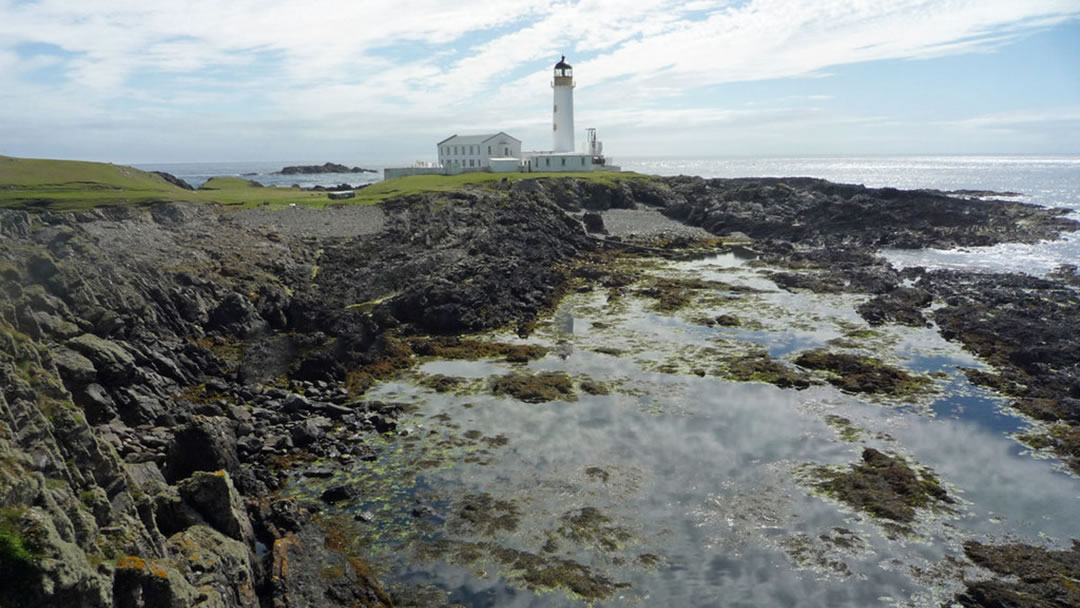
There were tales of great heroism and sacrifice by the keepers too. In particular during WW2, lighthouses were an easy target for swarms of enemy planes. Bombs were dropped in December 1941 that flattened outbuildings at the North Light. At the South Light, explosions from the bombing run killed the wife of the assistant keeper.
Then, at 3.45pm on 21 January 1942, two bombs from another air attack tore chunks out of the South Light, its accommodation block, store houses and boundary wall. In this attack, the principal keeper’s wife and daughter were killed, along with a soldier who was manning an anti-aircraft gun nearby.
Against the odds, Roderick Macaulay – one of the North Light keepers – journeyed southwards through a gale and snow drifts to help. With his assistance, the South Light was functional again that night. Roderick Macaulay then began his long walk home to operate the North Light. He received the British Empire Medal for his heroic actions.
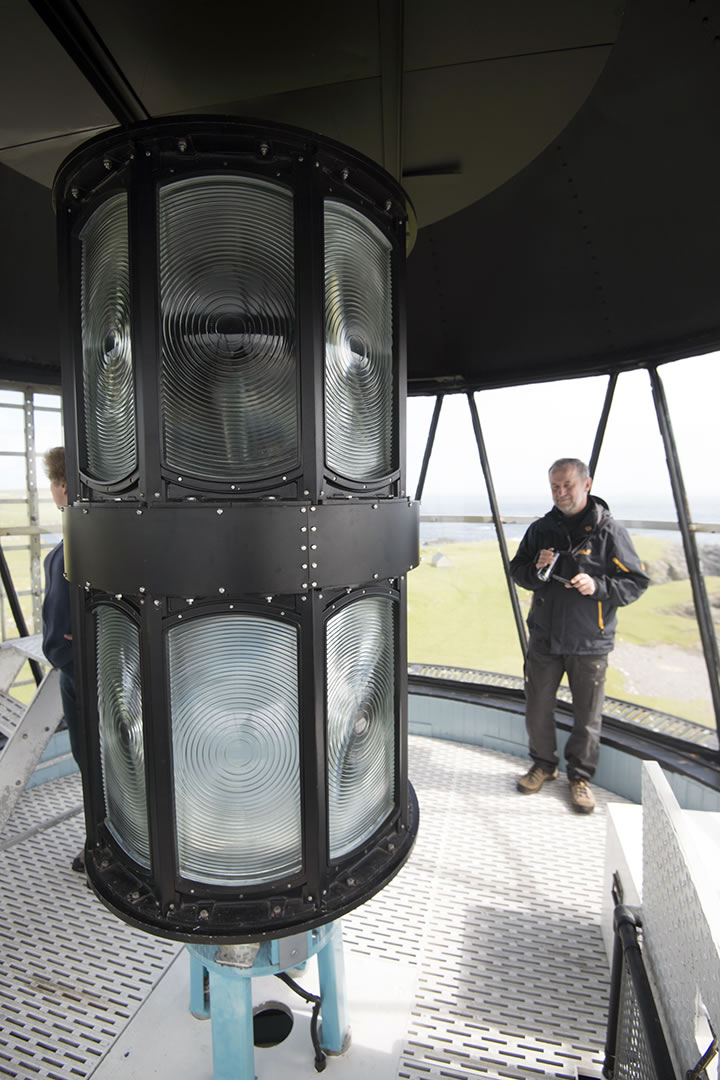
When the Fair Isle Lighthouses became automated
In recent years lighthouses around Scotland have become automated. This happened at Fair Isle North in 1983, and from that point, keepers were no longer required. The accommodation block was demolished at the North Light.
The South Light became automated on 31 March 1998, the last Scottish Lighthouse to do so. This ended a long tradition of manned lighthouses in Scotland. Now both lighthouses are controlled remotely and maintained regularly by the Northern Lighthouse Board.
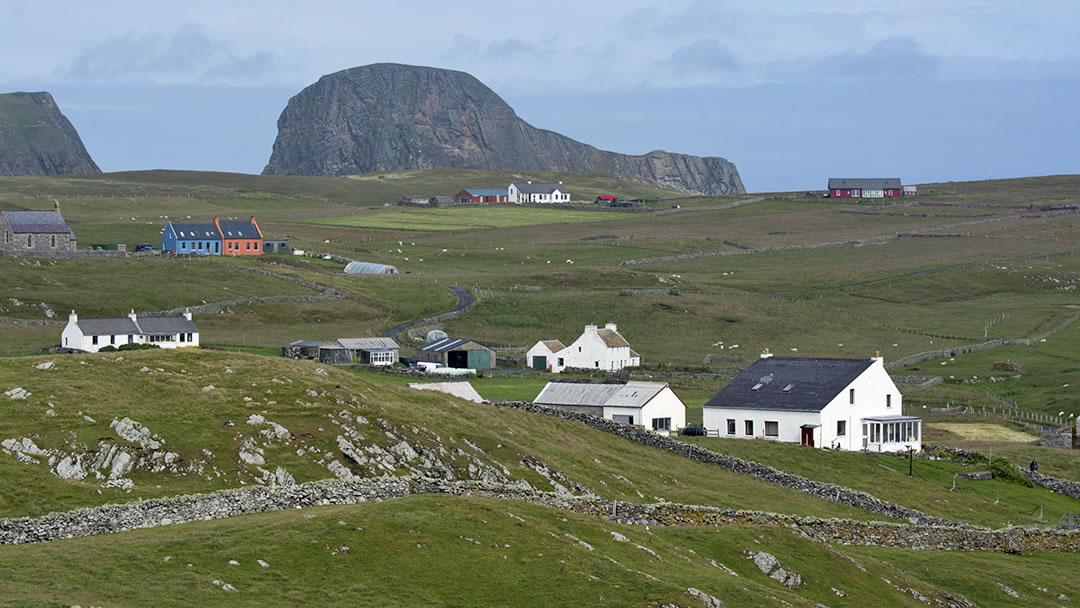
The Fair Isle population greatly felt the loss of the lightkeepers and their families.
We hope you enjoy your visit to lovely Fair Isle and to both the lighthouses that protected shipping against the rocks in the streaming tide.
 By Magnus Dixon
By Magnus DixonOrkney and Shetland enthusiast, family man, loves walks, likes animals, terrible at sports, dire taste in music, adores audiobooks and films, eats a little too much for his own good.
Pin it!